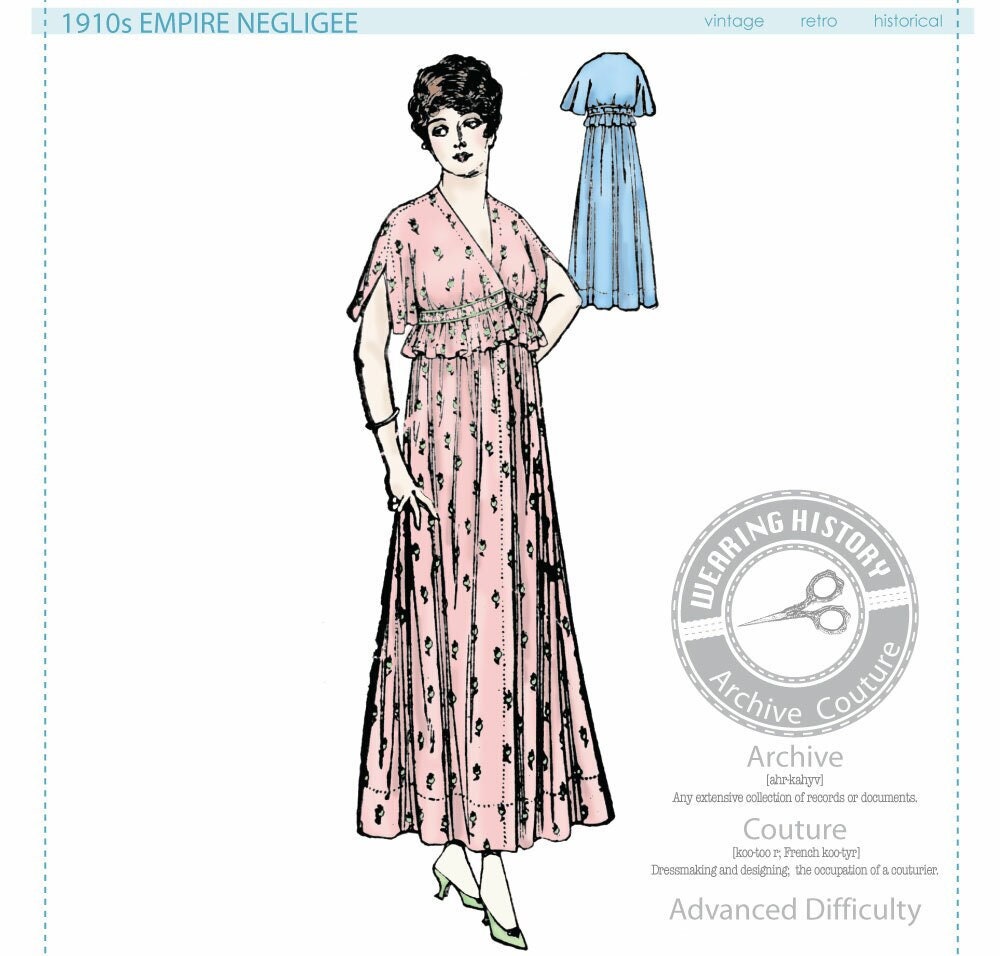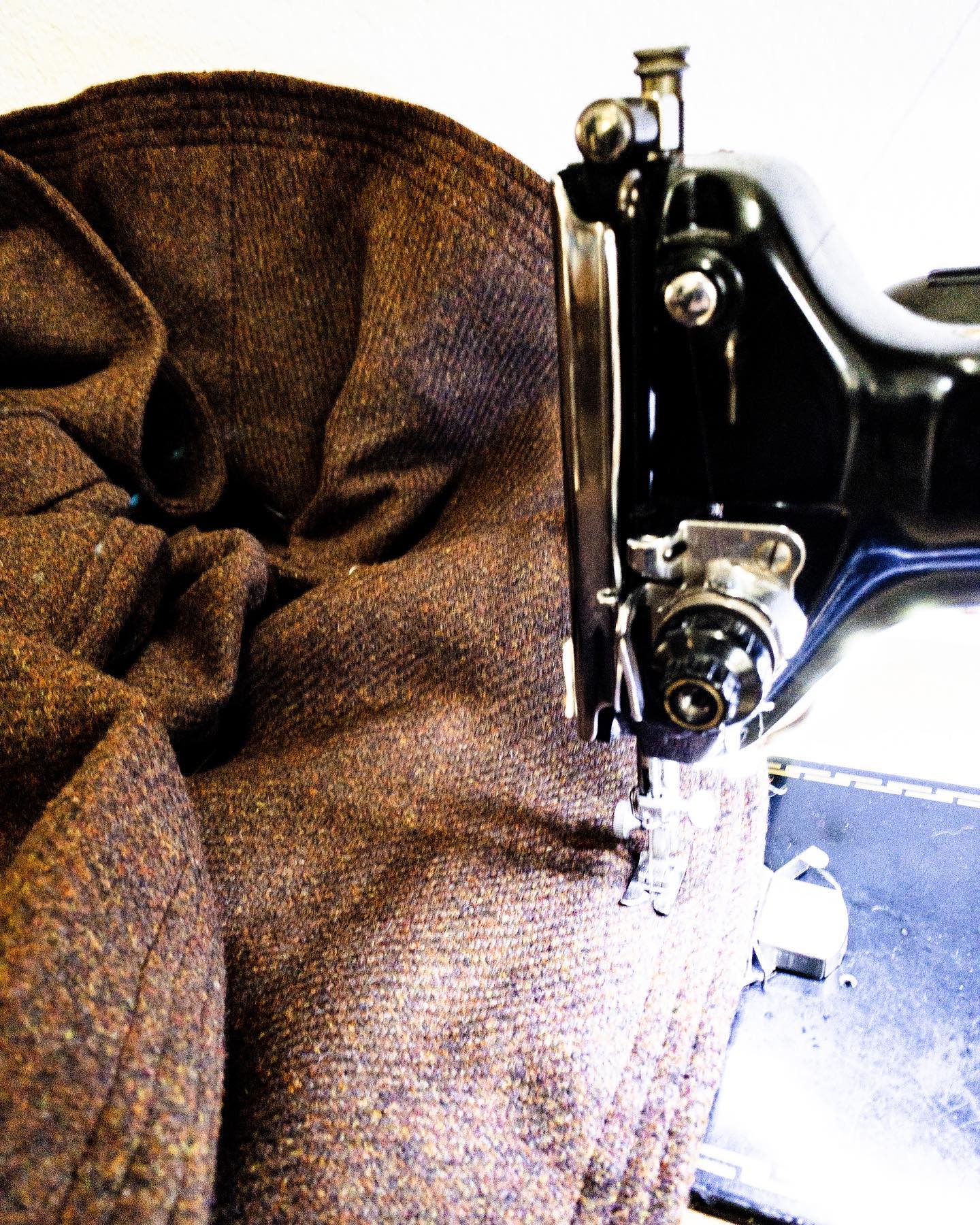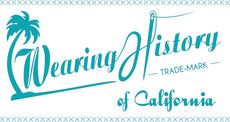wearinghistory
PRINTED PATTERN- 1910s Empire Negligee Pattern- Bust 36"- Wearing History
Couldn't load pickup availability
This is for PRINTED PATTERN- Mailed to you. E-Pattern download is available in a separate listing in my store.
One Size Only- Size 36" Bust, Waist 26 (waist adjustable larger), Hip 39"
A lovely negligee from 1915 for lounging around the house, wearing while getting ready, or it even could worn as a modern jacket if you crop it shorter! This pattern was originally sold as a pattern suitable for regular wear or maternity wear. The misses one can be made with gathers set in place, and the maternity version was to use used with elastic through a casing. This negligee is constructed from four pieces.
- Difficulty -
Advanced difficulty. This blouse has the original period instructions that are text only and very minimal. There is no seam allowance included. You may wish to have a sewing book handy for detailed techniques. Adventurous intermediate sewers may be able to accomplish this pattern.
ABOUT THIS PATTERN:
This is taken from an original 1910s pattern by May Manton. The pattern was stamped 1916.
Archive Couture patterns are an exercise for one’s skills, and an adventure into understanding sewing from antique patterns. Please read more details about this pattern below.
-Size and Yardage-
This pattern is available in one size only. Size 36" bust, 26" waist. The waist is adjustable with the use of gathering through a casing or elastic.
The original yardage chart calls for 7 yards of 26" wide fabric or 6 1/4 yards of 34" wide fabric
You may be able to cut from less fabric on modern widths. Test pattern placement on a modern width to estimate yardage.
- - WHAT IS INCLUDED WITH THIS PATTERN - -
* A clean, computer drawn pattern of the basic pattern shapes needed to create the garment illustrated.
* Original pattern instructions
* A page of tips for the instructions
* A page explaining the layout of the original pattern cover in an era when separate instructions did not exist
* Unaltered period pattern shape and fit. These pattern shapes retain historical accuracy, however, fit may need to be adjusted in the mock up phase.
*
* - - What Is NOT Included With This Pattern - -
As per the "About Archive Couture Patterns" paragraph below, what is not included is standard of patterns of this age.
* NO SEAM OR HEM ALLOWANCE- The sewer may add them at their preferred seam allowance width.
* NO step by step sewing instructions or illustrations. You must be familiar with how to put a garment together using pattern shapes and garment illustration.
* NO finishing techniques
- - About Archive Couture Patterns - -
Archive Couture patterns are of Advanced Difficulty and recommended for those who are familiar with putting patterns together with little to no instruction, and who are familiar with pattern alterations for fit. These patterns are have been taken from original historical source materials. These sources may include diagrams, overlapping patterns in magazine issues, early tissue paper patterns, or other period source material. The source material was used by experienced home sewists, dressmakers, or tailors of the period from which they are derived. These patterns were only available only in single sizes, with details such as grain lines or buttonholes most often unmarked. Wearing History has clarified markings (where given) and supplied tips for working with these historical patterns. You may choose to have a modern or period sewing book on hand to help with construction and fitting. Archive Couture patterns follow the period shapes of the original period source material, maintaining the historical accuracy and fit of the completed garment. Fitting a muslin mockup is strongly recommended, as all garments were meant to be worn over period foundation garments or corsetry. Fit and proportion of these patterns are different than modern costume patterns and may require alteration to fit your modern body, even when wearing period style foundations. Several mock ups may be required to achieve ideal fit. We believe these patterns should not be lost to time or languish in historical archives, but be made available for historical sewing enthusiasts of today.

-
Shipping
PRINTED PATTERNS are mailed to you and already printed on big paper. Shipping is calculated at checkout. Please allow up to one week for orders to ship.
E-PATTERNS and E-BOOKS are digital download PDF files you save and print yourself or have printed for you. These will not mail to you. You download them yourself to your computer after checkout.
We do not sell to the EU or the UK on this site, as we aren’t set up for VAT collection. Please shop on Etsy if you’re in those countries. Http://wearinghistory.Etsy.com
-
HOW TO USE E-PATTERNS
Most patterns come as both A4/US LETTER and A0 size. You will need ADOBE READER, a free program, to print your e-pattern.
For A4/US LETTER paper:
Open the "READ-ME-FIRST" File for instructions on printing and piecing your pattern. Print the PDF file on your home printer, cut off on the lines given, and tape them together. Then you cut and use your pattern just as you would a normal home sewing pattern.
For A0 size:
This is sent away to a copyshop and printed on big sheets for you. We print A0 pattern sheets at great prices at Pattern Printing Company
-
Returns
No returns or exchanges are accepted. Please be sure of your pattern size and type of product, either physical or digital, before purchasing.

Carefully Researched
All of our patterns are carefully researched and based on either public domain materials or our own creations. Lauren applies her decades worth of practical application of historical fashion and technical skills when making these patterns, and often supplies watch points for making. External helps are available on Wearing History on YouTube and on Wearing History Blog to help you learn to sew history.

